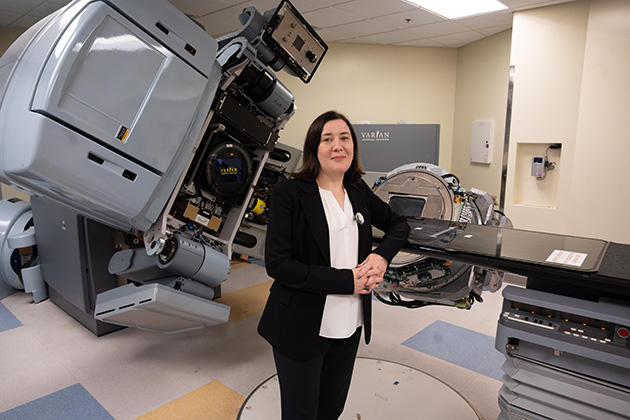Oct. 28, 2025
Members of the Georgia Tech community gathered in the Marcus Nanotechnology Building on Oct. 23 for the third annual Oliver Brand Memorial Lectureship on Electronics and Nanotechnology. This year’s lecture was delivered by Vijay Narayanan, fellow at the IBM T.J. Watson Research Center, who spoke on designing and building the future of artificial intelligence (AI) with next-generation silicon technologies.
“Oliver’s past exemplified interdisciplinary discovery, from early work in physics and MEMS to leadership in micro/nano systems — linking institutions and domains,” said Michael Filler, deputy director of the Institute for Matter and Systems (IMS). “He helped shape large-scale research infrastructures, integrated faculty from across engineering and science, and forged connections between academia, government, and industry.
The Brand Lecture invites speakers whose work and innovations reflect the spirit of Oliver Brand’s legacy of research that bridges fields and transcends traditional boundaries.
“I’d like to thank [IMS] for inviting me to this podium to talk a little bit about how I see materials really driving many of the semiconductor innovations that are key for AI design as we see it today,” said Narayanan.
“Driven by AI, there’s a growth in semiconductors in many topical areas,” he said. “There’s significant growth, and it’s not just apps. It’s hardware, technologies, things that will actually grow the ecosystem. And there’s some challenges, very big challenges.”
One of those challenges is the energy consumption associated with large language models.
“One case of training for GPT-4 is equivalent to 25 jetliner round trips from New York to Tokyo,” said Narayanan. “That’s a lot of energy.”
He emphasized the critical role of scientists in addressing the rapid growth in AI-driven compute demands and the urgent need for sustainable, scalable technologies. His talk explored cutting-edge developments in materials science, including nanosheet transistors, advanced lithography, and novel materials like rhodium and topological semimetals. Narayanan underscored the importance of interdisciplinary approaches to overcome energy and performance challenges in next-generation silicon technologies.
“Let us carry forward Oliver’s legacy of curiosity, collaboration, and compassion, and let us embrace the challenge of innovation,” Filler said in closing remarks.
Brand, who died in 2023, left a legacy that lives on through interdisciplinary research at Georgia Tech. He spent more than 20 years as a member of the Institute’s faculty. In addition to leading the Institute for Electronics and Nanotechnology (IEN), he was a professor in the School of Electrical and Computer Engineering, director of the Coordinating Office for the National Science Foundation-funded National Nanotechnology Coordinated Infrastructure (NNCI), and director of the Southeastern Nanotechnology Infrastructure Corridor, one of the 16 NNCI sites.
Brand united researchers in the fields of electronics and nanotechnology, fostering collaboration and expanding IEN to include more than 200 faculty members. In addition to his respected work in microelectromechanical systems, he is remembered for his kindness, dedication, and unwavering support for all who knew him.
Previous Lectures:
News Contact
Amelia Neumeister | Research Communications Program Manager
The Institute for Matter and Systems




